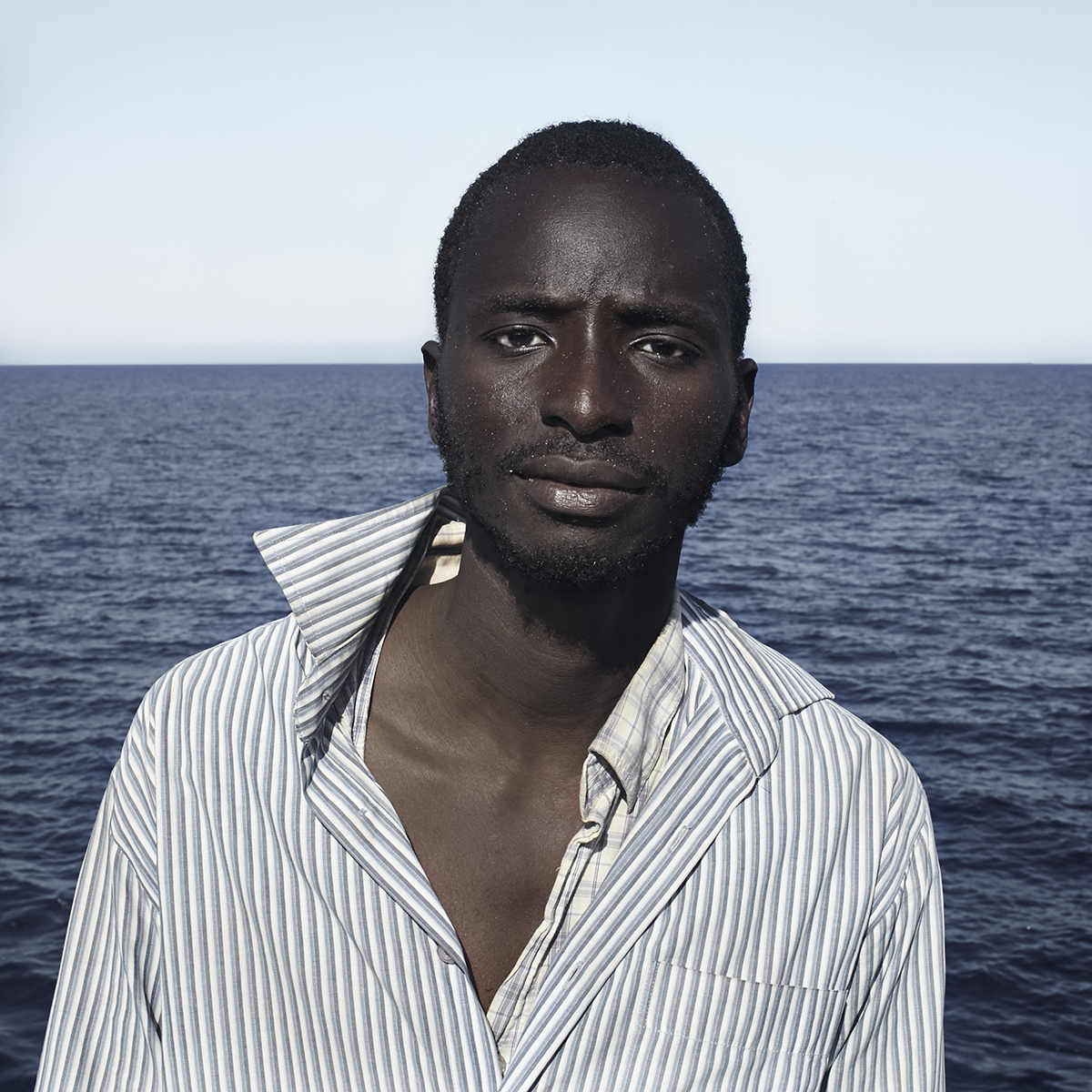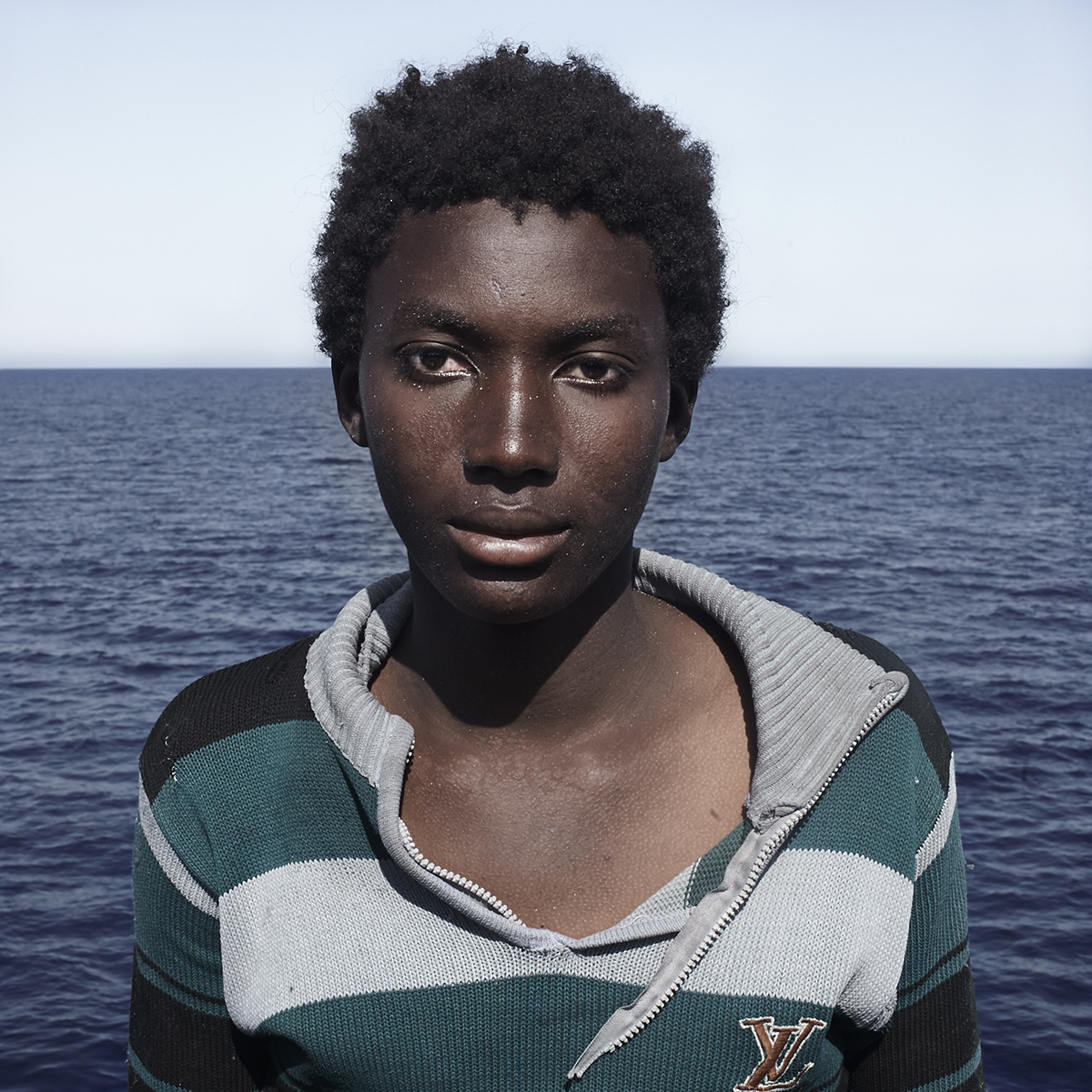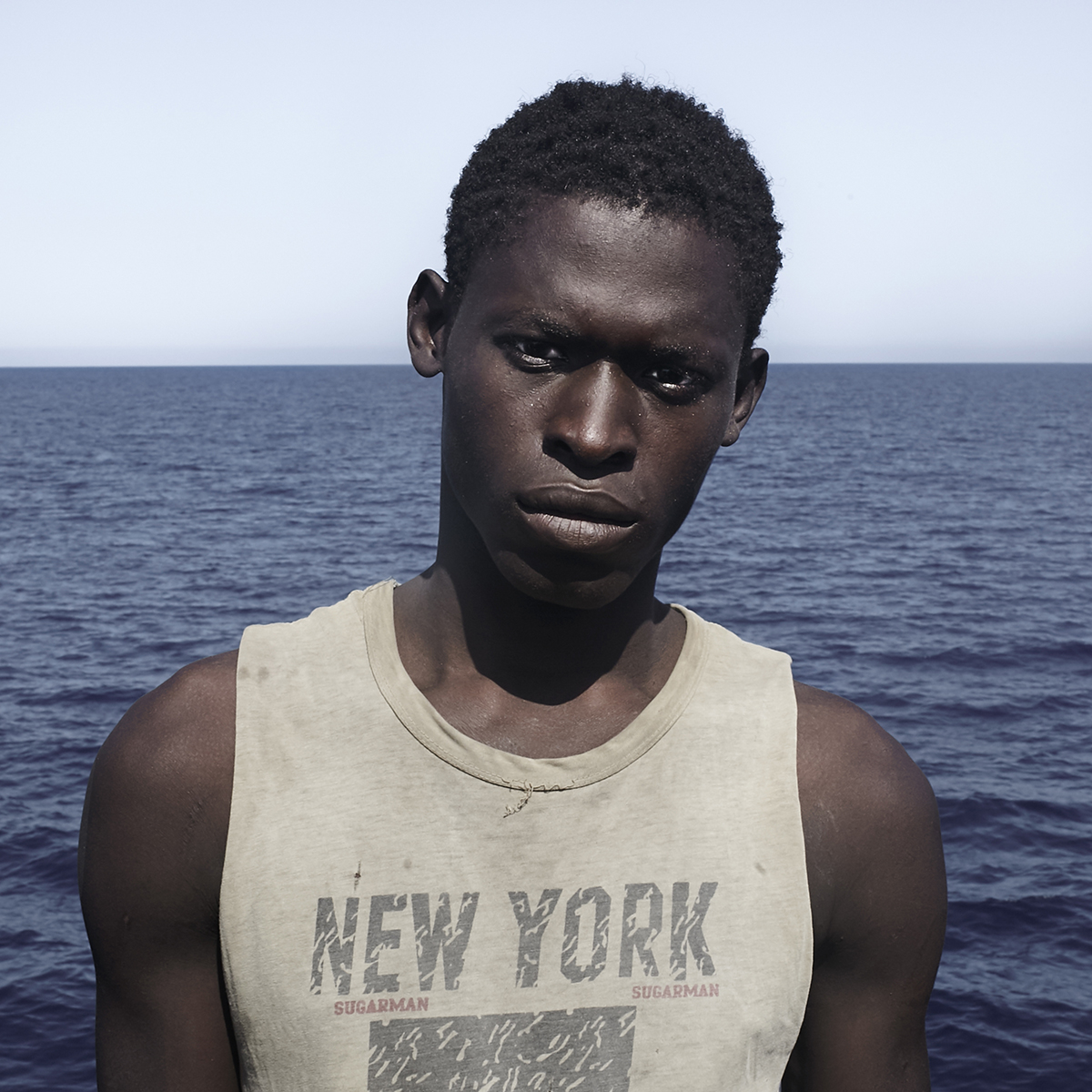César Dezfuli’s Passengers is a series of portraits taken of people drifting in the Mediterranean Sea after trying to cross in August 2016. We spoke to César about the project.
What one thing has most helped to shape your practice?
The first project I did is the one that allowed me to continue in photography. That was the moment when I started to believe in myself and understand that through hard work and being very focused, I could make any project work. I’ve also always understood that failure is part of learning.
Why photography? Why the still image?
I do not only work with still photography. The first part of the series Passengers, the portraits taken at sea, will be accompanied by contextual texts based upon interviews I am doing, as well as videos, maps, letters written by passengers, as well as other materials. As for photography, it is a gateway to places, contexts and environments in which otherwise I would have no excuse to access. Through photography, I can narrate the realities that I choose to document in a way that I could not do through words or other media.


Where do your ideas begin?
Most of the projects I’ve done have been long term. Once I find a topic I want to work on, I get very involved in it and I carry it from the concept and research to its distribution. Many of the ideas come while I’m travelling or through people I meet on the way, and stories I read or hear about. I tend to work on every topic in a very personal way, but I always try to find a journalistic approach that will make the stories more interesting for the public and connect with the greatest number of people. Photography allows you to do that – you can adapt the type of photography to the way you want to tell a story.

What’s next?
The Passengers project is not finished; I am in the next phase of it. It has already taken me more than two years and will surely take me another year to finish. I am trying to locate the 118 passengers of that boat to emphasize the idea that I have been working on since the project began: that each of those numbers has a story behind it. I have already located 105 of the 118 people who were in the boat, and I have conducted interviews with 40 of them and documented their lives; they currently live in different places in Europe, Italy, France, Germany, Spain, Switzerland, Belgium and the Netherlands. This is a research project in which I want to address the issue of migration along the central Mediterranean route. I’m using a comprehensive approach that serves to explain this complex reality, with a special focus on explaining the terrible crimes that are being committed against migrants in Libya, through the testimonies of those who have lived it.
For more from #1 Europe click here.
For more of César’s work, click here.



